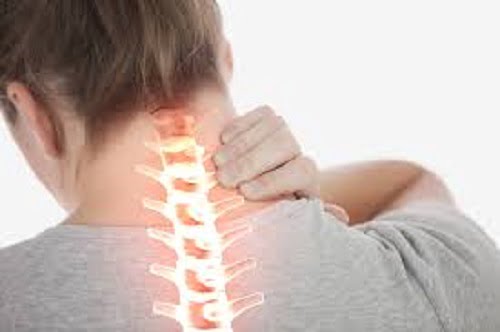The chordoma is rare type of cancerous bone tumor that can happen at any part of the spine or in the skull. Most of these tumors are found in adults aged 40 – 70 years old [1]. The clival chordoma is one example of it. These tumors affect about one person in one million per year. 1 – 4% of all primary bone tumors are chordomas [2]. Typically, chordoma grow slowly. It is often found in the front (anterior) part of the spine or the base of the skull. They can happen at any point along the spine.
The most common locations include the base of the spine (known as sacrum), the tailbone (known as coccyx), and the place where the spine meets the skull (known as skull base). There is a bone known as clivus that is located in the back of the throat, but in front of the brainstem. The chordoma here is known as clival chordoma. Each year about 300 people are diagnosed with chordoma in the United States [3]. You can get chordoma any time, even in your childhood. The chordoma can happen anywhere in your skull, neck or back.
Many of them grow in the bottom of your spine or at the base of your skull. From there, they can spread to other organs in your body, like your lungs, but they usually grow slowly. They are close to important areas like brain and spinal cord, so they need to be treated very carefully.

Chordoma symptoms
The symptoms of chordoma can vary depending on the location of chordoma and how big it is. The chordoma can press on nerves in your brain or spine. The most common symptoms of chordoma include:
- Bowel or bladder problems
- Runny nose
- Nosebleeds
- Pain
- A nerve or muscle weakness in the back, arms or legs
- Visual problems, such as double vision
- Headaches
The chordoma in the spine is causing symptoms like:
- Problems controlling your bladder
- Pain in your lower back
- A numbness, tingling or weakness in your arms or legs
- Lump in the lower part of your back
- Loss of control over your bowels
The chordoma in skull is causing symptoms like:
- Trouble swallowing
- Neck pain
- Loss of feeling and movement in your face
- Headache
- Double vision
- Changes to your voice or speech
- Abnormal eye movements
In some cases, the chordoma in the brain can block the flow of fluid there and in the spine. This fluid can build up and put pressure on the brain and this condition is known as hydrocephalus. Your doctor will make imaging tests to see where the cancer is inside your body and how big it has grown. These imaging tests include MRI, CT and X – ray. Your treatment will depend on the location of tumor, size of your tumor, your health and your age. Often, doctors remove the chordoma with surgery. Your doctor will make tests to see if the chordoma has returned after the surgery. If it has returned, you may need another surgery.
Chordoma causes
There are some studies in which are said that a person has a higher risk of chordoma by inheriting an altered gene from a parent. [4] But, also there are some cases when chordoma happens in people who have no family members with history of chordoma. Also, in some studies are said that children who have a genetic condition called tuberous sclerosis complex have a higher risk for developing chordoma [5]. In the womb, baby has a thin bar known as notochord which runs along his back. This bar supports the bones of the spine as they grow and the notochord disappears before the baby is born.
In small number of people, some of the notochord cells are left behind the spine and skull and doctors believe that chordoma starts due to a change in the gene which carries instructions for making a protein that helps the spine form. This change is causing notochord cells that are left in the brain or spinal cord to divide too quickly. Usually, this change happens randomly. You should know that no one in your family has to have chordoma for you to get it. In rare instances, chordoma can run in families.
Risk factors
Most often chordomas are found in adults between 40 – 70 years [1]. A small percentage, about 5%, is found in children. Also, males have two times more chances of developing chordoma compared to females [6].
References:
[1] Zhou Y, Hu B, Wu Z, et al. The clinical outcomes for chordomas in the cranial base and spine: A single center experience. Medicine. 2019;98(23):e15980.
[2] Youssef C, Aoun SG, Moreno JR, Bagley CA. Recent advances in understanding and managing chordomas. F1000 Research. 2016;5:2902.
[3] National Cancer Institute. Chordoma study. Retrieved from dceg.cancer.gov/research/clinical-studies/chordoma
[4] National Organization for Rare Disorders. Chordoma. Retrieved from rarediseases.org/rare-diseases/chordoma/
[5] Dahl NA, Luebbert T, Loi M, et al. Chordoma occurs in young children with tuberous sclerosis. Journal of Neuropathology & Experimental Neurology. 2017;76(6):418–23. doi:10.1093/jnen/nlx032
[6] Manasan CVC, Carnate J. Dedifferentiated chordoma in a 53-year-old female: A case report. Philippine Journal of Pathology. 2018. Retrieved from philippinejournalofpathology.org/index.php/PJP/article/view/46/109




